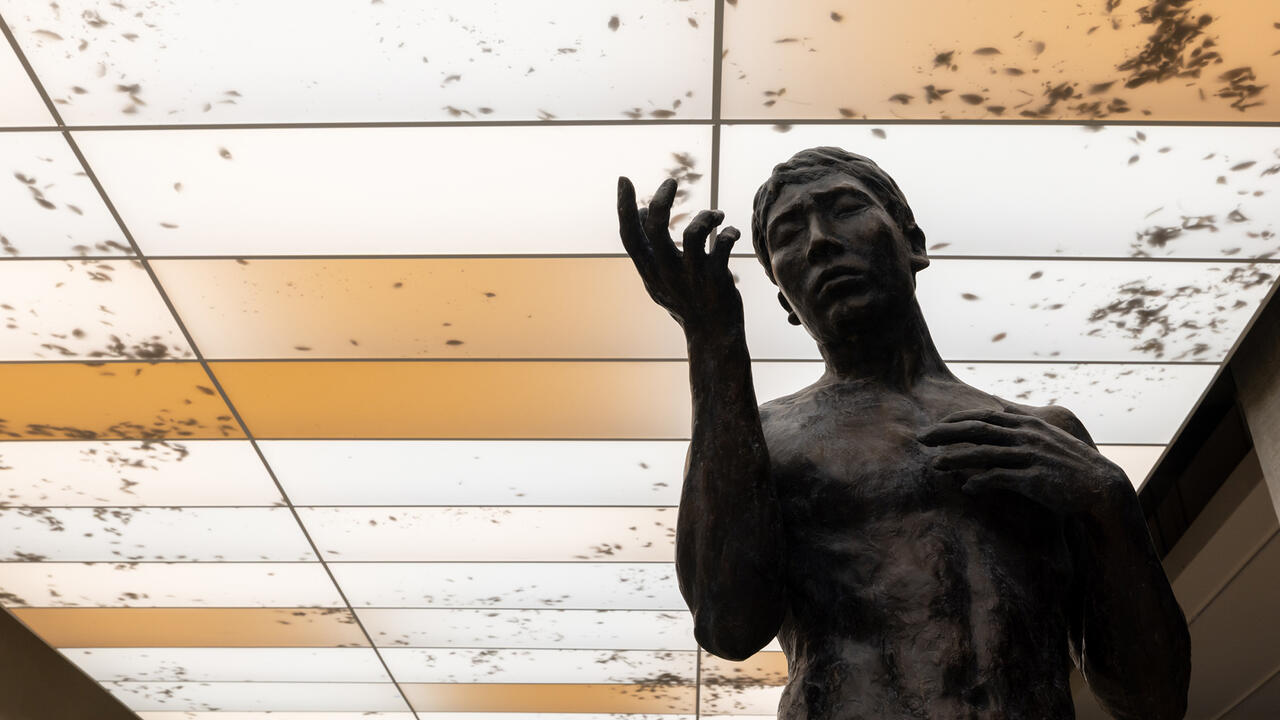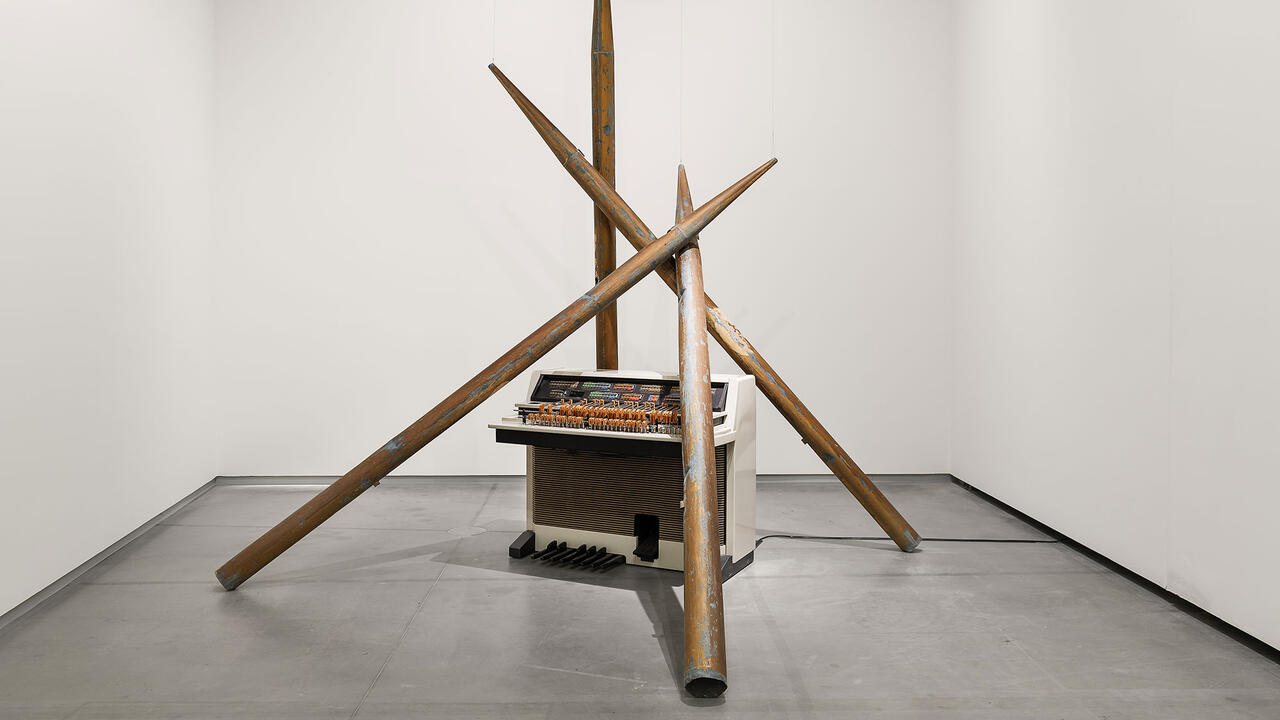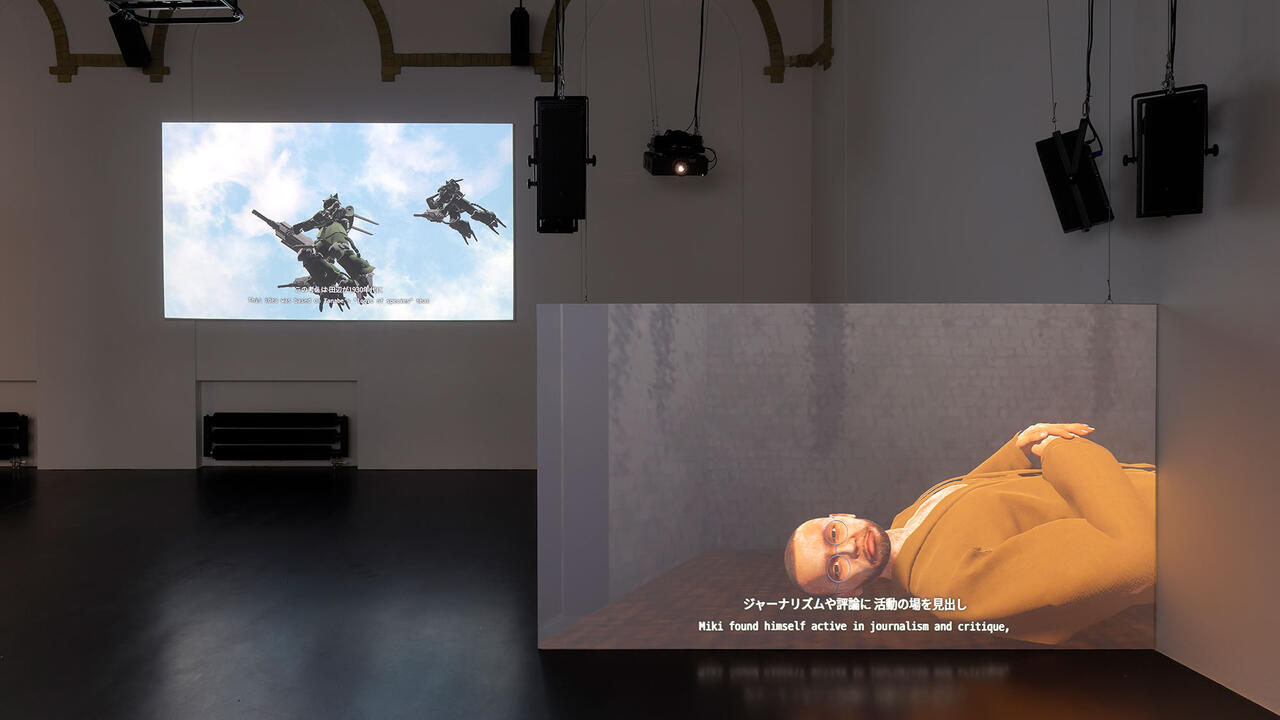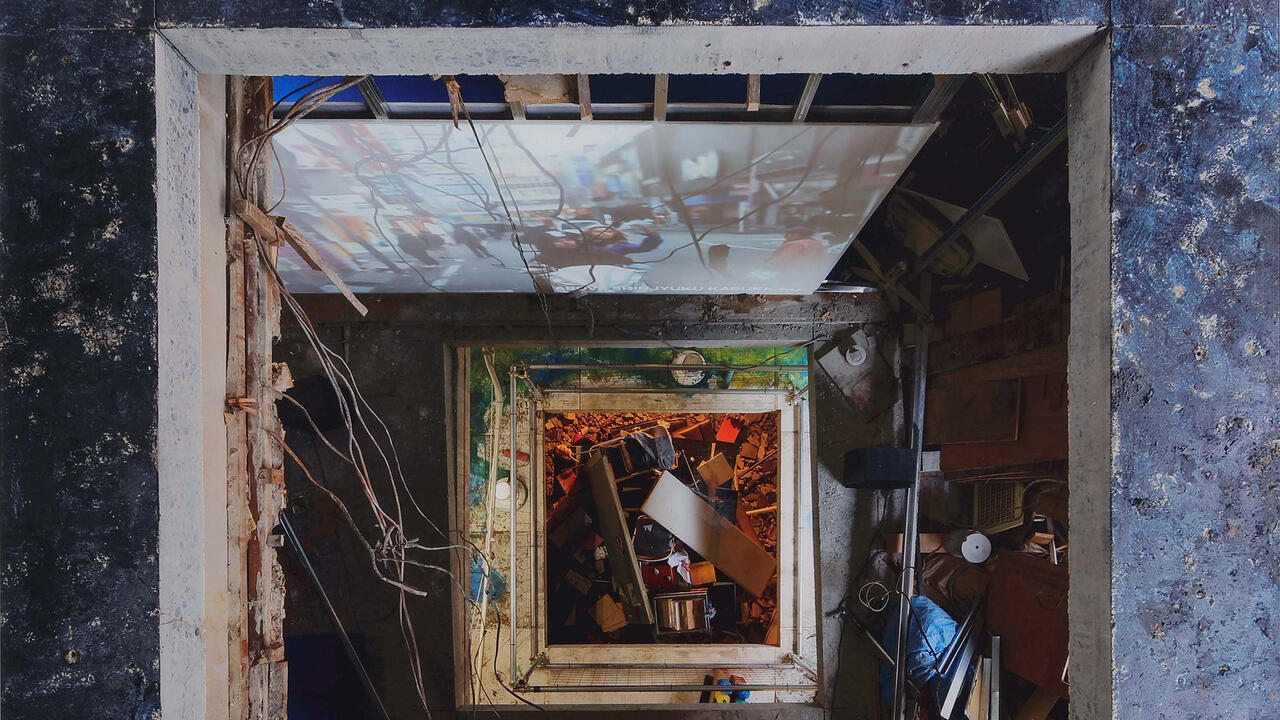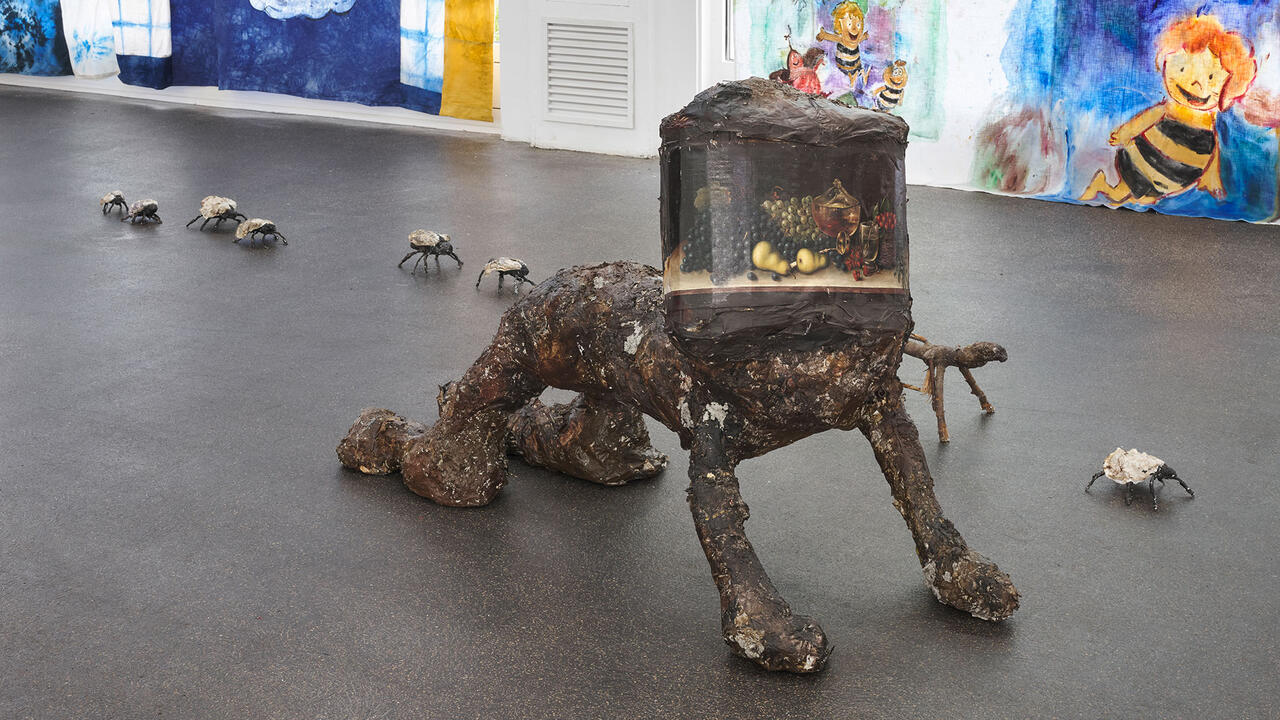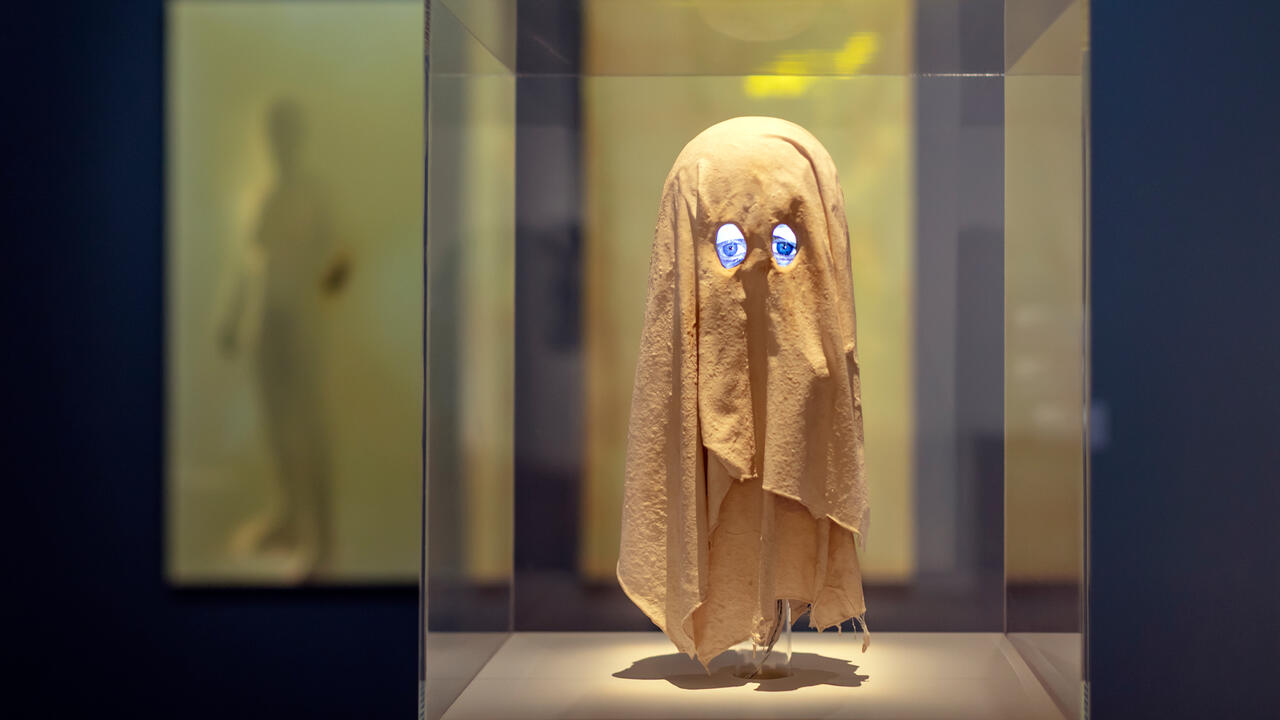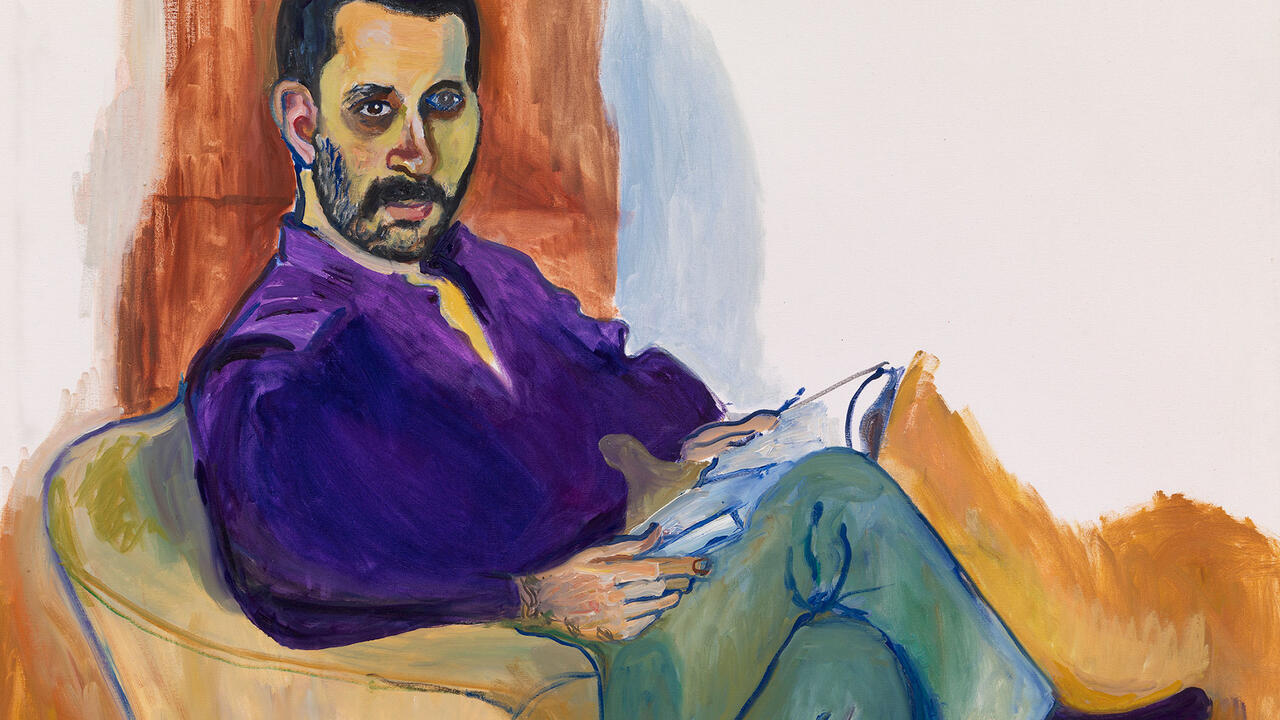Beijing
The rapidly changing scene of the Chinese capital
The rapidly changing scene of the Chinese capital

Waling Boers
A curator, writer and founding Director of BüroFriedrich-Berlin and UniversalStudios-Beijing
When the cab driver dropped me off in a crowded Beijing business street in front of a company called ‘Great Prospect Co.’, a recent headline from a German weekly popped into my mind: ‘Attack from China – Germany fears the Yellow Danger.’ It is, of course, a question of perspective, but instinctively I felt more at ease in Beijing than in Berlin at that moment, even though I could communicate with the driver only by giving him my mobile phone, so that my host could explain where to take me.
Seen from the other side of the globe, the emotional housekeeping of the West seems all the more in peril. Is this because the fear of losing economic and cultural dominance dictates the dynamics of everyday life? In contrast, the new Chinese attitude clearly gets its positive energy from accelerating expectations. This fundamentally different mindset has modelled the current art scene in China’s metropolises.
In a hectic dialectic involving artists, critics, curators, collectors, gallerists and officials, over the past few years contemporary Chinese art has launched itself into Western art history through international group shows, record-setting auction sales and annual discoveries of new art movements: Mao goes Pop, Cynical Realism, Bad Painting, Shock Art, Meat Art and New Measurement. Recently, Chinese art, however diverse in itself, has become a must-have brand, like those other nation-state-labelled commodities (such as Young British Artists, German Art or Art from the South Pacific). One headline in the Wall Street Journal this July read: ‘New art from China attracts Big Money from Collectors.’ As if everybody must have it now.
Meanwhile the first private ‘Chinese Collections’ have become publicly accessible outside and inside China: the Sigg Collection in Switzerland and the Haudenschild Collection of Experimental Art in Shanghai and Beijing. In the case of the substantial collection of the Belgians Guy and Myriam Ullens, their lucrative investments returned to China packaged with a foundation, and will be included in Beijing’s art park Factory 798. Although this act of reciprocity is, of course, injected with the post-colonial idea of balancing the cultural exchange, these events are important in Beijing’s artistic landscape. For those involved in the field, these intensified activities involving foreign collectors have provided reason enough to question the ethics of collecting. At this year’s Art Basel Conversations, Guan Yi, one of the most engaged collectors in China, stated: ‘I think Western collectors are not always interested in the cultural value of contemporary Chinese Art; they pay more attention to the commercial relationship between politics and art.’
Although many people are talking about this branding phenomenon, artists are less impressed than amused by it. The sardonic Beijing artist Yan Lei responded to the questionable role of auction houses – an important market instrument in the Chinese art upheaval – by creating an ‘industrially produced’ series of paintings featuring banknotes, Picassos and a so-called ‘artistic expression’ created by a chimpanzee. Besides commenting on the superficiality and anonymity of the international art market, Yan Lei addresses Chinese artists’ increasing dependence on the market and the pressure to produce art works as market-fitting commodities – a dependence imposed by the lack of an alternative. There are no grants in Beijing, no commissions, no museums for contemporary art, no political élite that acknowledges its cultural responsibility.
Not that this is such a big problem under the current circumstances. The Chinese cultural élite knows only too well what it is to have Big Brother watching you, although everyday surveillance is lessening. While some specific acts are forbidden by law – such as the consumption of human tissue, which has featured in some works – exhibitions are no longer being closed down. While in its first years the Beijing Art Fair was a state-subordinated affair, it is now a privately run organisation that will soon be the largest contemporary art event in Asia.
In other, traditionally more state-controlled branches of the arts, like film and literature, changes are also taking place. Censorship is turning into a form of advisory supervision, as the independent filmmaker Wang Xiaoshuai discovered when getting his film Shanghai Dreams (2005) officially distributed. After a process of negotiation he had to change the ending of his film by reducing the number of audible gun shots, which referred to public executions. But such interventions from the Ministry of Information are not taken so seriously any more. Within the ideological framework encapsulated in the new slogan ‘Build a Human-centered Harmonious Society’ people play sportily with the rules of mainland China, as former ‘underground’ filmmaker Jia Zhang-Ke did when he accepted the position of chairman of the jury at last year’s Shanghai Film Festival. In practice, the relation between Government officials and the art scene has become a kind of Cold Peace. State censorship is becoming self censorship of all those involved (artists, curators, producers, publishers, etc). As in the West, the ‘underground’ is becoming more and more like a waiting room for the mainstream.
The best place to feel this cool breeze is in China’s cultural centre, Beijing, which has the ambivalent reputation of being more ideologically sympathetic than other cities such as mondaine Shanghai or hard-working Guangzhou. In Wang Wei’s latest installation, Trap (2005), realized at Platform China in Beijing’s new art area the East End, birds flew around, caged in a huge labyrinth of sticks. Only a few small windows were opened to extend their territory. Rethinking the political-cultural situation in a similar way to Wang Wei, one of the few programmatic galleries in Beijing ironically named itself Long March, leaving little room for misunderstanding about the remaining ties between the new cultural upheaval and the past.
Looking at the international success of the older generation of painters (strongly Beijing-based) and the endless repetition of its predictable Socialist Realist vocabulary, the younger generation of artists is especially aware of being trapped by the pitfalls of exoticism: the ironic use of the imagery of Mao’s propaganda machine is good for a Western sale because it is easily recognized as typically Chinese and therefore satisfies contemporary sentiments among the post- or anti-communist ’68 generation. But it is a vocabulary that isn’t current any more in daily life in China, where it arouses only a meaningful smile.
Transcending the boundaries of the traditional, the Chinese and the market is not easy but is apparently a challenge that stimulates younger Beijing artists such as Liu Wei, Kan Xuan, Cui Xiuwen and Liu Xiao Dong. Their work uses the current situation as the basis for a substantial contribution to a more subjective experience and understanding of contemporary life. In humorous attempts to exorcize her fears by accepting them Kan Xuan put herself in some uncomfortable positions: running against a stream of people in a subway corridor (Kan Xuan yes!, 1999) or standing naked on a public pedestal (A happy girl, 1999) or allowing spiders to crawl over her (Looking looking looking for!, 2001). The problems Cui Xiuwen tackles are also connected to women’s lives in society today, problems that derive from the conventional female role of supplying services to the male population. From the perspective of a hidden camera Ladies’ Room (2000) shows a group of ‘night service’ women in the rest-room of a night-club.
In their effort to show that they aren’t scared of the Red Dragon, European cultural organizations – and in their trail artists, writers, scientists and others – are visiting China more frequently than ever. The Beijing Case, a somewhat conventional exchange programme organized by the Cultural Fund of the German Republic, brings together artists, film directors and writers from the two countries, among them Thomas Bayrle, Antje Majewski, Ma Yinglis and Cao Fei. Although the make-up of Cao’s work is extremely surreal, on the level of meaning and action it deals with completely ordinary experiences. Her film COSplayers, (2005) is both challenging and chilling: it juxtaposes the fantasy world of video games, in which young urban people in China spend their days, and the increasingly alienating expectations of society and family life. The piece sends a clear message about the management of fear among young people in China’s big cities. Welcome to the club.
Pi Li
An art historian, critic and founding Director of UniversalStudios-Beijing.
Until the early 1990s the ‘art world’ – in the sense of a system comprising artists, critics, dealers, curators, collectors and academics – simply did not exist in China. There were no commercial or non-official art spaces, and the China Art Gallery (and large official exhibitions in other venues) mostly displayed works in the approved Socialist Realist style.
Beijing is, of course, China’s political centre and the main focus of international attention. As a result artists there have been able to enjoy periods of relative freedom. From the late 1970s a circle of talented amateurs started to emerge in the city, supported by a coterie of diplomats from foreign embassies, curious international journalists and representatives of international corporations who were kept idle by China’s planned economy. In the early 1990s, while artistic innovation was again being suppressed by the state, these people acted as a conduit between Chinese art and the international contemporary scene and held a number of unofficial exhibitions in offices and apartments, so that gradually a small market – albeit not exactly as that word is understood in the West – arose. Although standards were variable, this market was lucrative, and some artists resigned from their official state posts and moved to Beijing, where they rented cheap houses from local farmers to use as studios. Most gravitated to Yuanmingyuan (the old Summer Palace) in the north-west of the city, an area that soon became known as the ‘artists’ village’.
China’s move towards a market economy more generally in the early 1990s and changes in the political situation were reflected in the way Cynical Realism and Political Pop became the dominant artistic styles. Those artists who committed themselves to ‘exposing the suppression of human nature in China’s society’ were praised in the West and frequently exhibited there, earning substantial incomes that enabled them to enjoy the good life, becoming China’s nouveaux riches. Western tourists took these styles, which clearly alluded to a non-Western ideology, as representative of contemporary Chinese art. Other artists meanwhile were inspired to elaborate on these ‘internationally best-selling’ styles, giving them more of a political emphasis; many younger ones, however, were encouraged to join the ranks of the supposed ‘dissidents’. While the West looked on more or less approvingly, the new art went hand in hand with a form of cultural nihilism and was finally reduced to little more than a roguish form of Cynical Realism.
Outside China itself most exhibitions of contemporary Chinese art adopted one of two approaches: the ‘impact versus response’ approach, which held that the salient factor in the development of modern Chinese culture was Western aggression, or the ‘tradition versus modernity’ approach, according to which modern Western society provided the benchmark for the rest of the world. Both of these represent Western-influenced views, believing that the industrialization of the West had been a good thing and that conditions in China could never favour a similar process of modernization. Following this logic, experimental Chinese art basically became a kind of folk art.
The ‘export-oriented’ system of the mid-1990s did give rise to a whole new crop of curators, but it did nothing to promote academic research or theoretical writing. In several cases exhibitions were held purely for international journalists and were actually intended to be closed down by the state. ‘Curator-oriented art’ created a false impression of prosperity while covering up deficiencies in scholarship and criticism. This not only hampered the development of contemporary art but also allowed the status quo, and Western-derived values, to go unchallenged.
Another factor in the shortage of home-grown theoretical art writing was China’s flawed academic system. With Chinese educational institutions ill-equipped to serve as an information resource, and with the mass media incapable of providing an objective assessment, any information about contemporary art in the West had to be passed on by word of mouth or culled from catalogues brought back by artists who had travelled abroad. And as most young artists were not able to read the catalogue texts, the only information they could glean came often from illustrations measuring just a few square centimetres.
During the first half of the 1990s painting remained the dominant medium. However, from 1995 the most fundamental change in Chinese art was the use of a broader range of media, with video and photography finding their way into a number of exhibitions in Beijing. This was a reflection of the dissatisfaction felt by younger artists towards a system focused purely on works that were collectable. Within a short period of time Chinese contemporary art had been galvanized. Almost immediately a new controversy sprang up in 1996, when a debate on ‘meaning’ highlighted differing approaches taken by young artists to the relationship between contemporary art, Realism, and a utilitarian understanding of art’s function in society. Some, most notably Qiu Zhijie, argued that ‘art cannot help us approach truth’ or, in more ‘academic’ terms, that ‘art is just pre-thinking, a preparation for a process, but it refuses to become any finished thought’. The original intention behind this line of argument was to reverse the tendency towards ‘vulgar sociology’ and ‘non-art’, which these artists argued were hindering the development of contemporary art. They also wanted to counter the pro-Western bias inherent in Cynical Realism, Political Pop or the kind of flashy, over-the-top kitsch work that has been dubbed Gaudy art. Qiu’s views, which were embraced mainly by artists from southern China – had a fundamental affinity with the political Enlightenment of the 1980s. In this context it is worth bearing in mind, however, that contemporary Chinese art cannot call on an extensive tradition of analytical discourse. Many young artists believe that artistic innovation simply means discovering original motifs. They regard the relationship between art and society as purely inimical. Art becomes a simple search for novelty, a view that has been described as a ‘Modernist cliché’. The result has been a variety of deliberately shocking works using the human body not so much to reflect on the implications of Modernism and Postmodernism within a post-colonial context as simply to provide novelty and titillation.
In the view of most of the more innovative artists the 1999 Venice Biennale (curated by Harald Szeemann) did not provide a representative survey of contemporary Chinese art because the artists included seemed to be mainly those who had achieved some degree of commercial success, again revealing one of the drawbacks of ‘export-oriented’ art. However, against that, the development of an art market in China has made it possible for not-for-profit or alternative, artist-run spaces to emerge, such as the Loft New Media Art Centre in Beijing and BizArt in Shanghai, complementing the commercial galleries and state-run museums. As contemporary Chinese art has received increasing international exposure, spaces such as these have attracted more and more critical attention; this, coupled with the fact that an increasing number of Chinese artists now receive at least part of their education abroad, means that experimental art has begun to look much healthier.
The growing market value of the new ‘commercial avant-garde’ has also aroused the interest of local dealers and the mass media, giving a further boost to innovative art by raising its profile. A number of private, Chinese-run commercial galleries have emerged, such as the Upriver Gallery in Sichuan and the Dongyu Gallery in Shenyang. However, with no state funding for the arts, and no tax concessions to encourage sponsors, their situation remains somewhat precarious.
Perhaps the most notable change in Chinese society as a whole in the 1990s was the sudden proliferation of the mass media. The lifestyles of the Cynical Realists and Political Pop or Gaudy artists became a recurrent topic in popular magazines, gradually making new art seem ‘harmless’ to society and again raising its profile. By the late 1990s younger figures were being promoted to important positions in government, helping to create an artist-friendly environment. The Central Academy of Fine Arts and the China National Academy started running courses on the new media, and a number of experimental artists were invited to give lectures. At the same time the Shanghai Art Museum, Guangdong Museum of Art and He Xiangning Museum in Shenzhen all began holding regular exhibitions of new work, such as the Shanghai Biennial, the China Contemporary Sculpture Annual Exhibition and the Guangzhou Triennial. And by 2000 there were numerous opportunities for artists in the form of cultural exchange programmes with other countries.
Nevertheless, such measures have usually been the result of one-off decisions made by individual officials, rather than being built into China’s political or legal structure, and so the situation remains somewhat unpredictable. Even so, the rise of local museums and the emergence of ‘alternative art spaces’ does reflect a move away from an ‘export-oriented’ system to something more ‘local-oriented’, effectively transforming contemporary art and its social context. The ‘export-oriented’ art system had led to a logic based on the manipulation of ideological differences and antagonisms between China and the West, but these differences and antagonisms obviously cannot provide a permanent basis for new art in China, which needs to establish its own identity. One lesson to be learnt from the new work coming out of the former Soviet Union and Eastern Europe is that a redundant ideology alone cannot provide a permanent raison d’être for art.
With China’s entry into the World Trade Organization the need to come to terms with the new world order is increasingly urgent. Young Chinese artists must prepare for an era when pressure from different ideologies gradually disappears: they will have a future only if they turn their attention to deeper issues within society. In the meantime the increasing acceptability of new art has raised some interesting problems. For example, when artist Zhao Bandi appeared with a toy panda in a series of posters throughout Beijing and on CCTV (Chinese Central Television), critics and theorists were uncertain how to react: ‘When an artist gets into bed with the system, what moral obligations are incumbent on him or her?’ By borrowing Jürgen Habermas’ notion of ‘commonness’, art theorists had been looking for a way to seize art from the clutches of international biennials and return it to its local context. They assumed the essence of new art was to be anti-establishment, but without support from some form of establishment that new art lacks roots and is vulnerable to manipulation. This paradox had already been apparent with the ‘export-oriented’ art of the 1990s. Innovative art is increasingly found in public spaces, but only on the condition that it avoids sensitive issues. Can interesting new work continue to be produced if artists allow themselves to be restricted in this way? And what will happen if they don’t?





